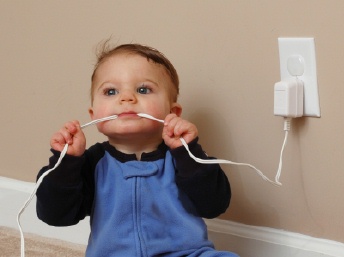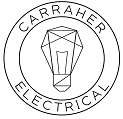Why is it so important to work safely with or near electricity?
The voltage of the electricity and the available electrical current in regular businesses and homes has enough power to cause death by electrocution. Even changing a light bulb without unplugging the lamp can be hazardous because coming in contact with the “energized” or “live” part of the socket could kill a person.

Current legislation
- It is illegal for anyone other than a Registered Electrical Contractor (REC) to carry out electrical work in your home* or to portray themselves as being registered.
- Registration under Safe Electric means the contractor is registered and insured.
- The contractor must issue a certificate for all work carried out.
Bathroom
Ensure your Electric shower is protected by an RCBO
Do not use portable appliances in the bathroom
Never use a socket in the bathroom. Heaters should be permanently wired.
Kitchen
- Make sure all sockets are protected by a Residual Current Device (RCD), and regularly check it is working by pressing the ‘T’ or ‘Test’ button
- Have a fire blanket and fire extinguisher easily accessible in the kitchen
- Unplug your electric kettle before filling it, and always replace a leaking kettle immediately
- Unplug electric appliances before cleaning them
- Have faulty appliances repaired by a professional
- When you are buying kitchen appliances (or any electrical appliances), make sure that they carry the CE approval mark, which implies that they meet European safety requirements
- Let steam appliances (kettles, irons) cool down before refilling with water.
MCB’s and Fuses
Trip switches and fuses are essential safety devices that cut off the flow of electricity in your home if a fault occurs.
Where to find them
You will find Miniature Circuit Breakers (MCBs) and fuses in your distribution board.
They protect the individual circuits that carry electricity to the various applications in your home, such as lights, sockets, immersion heater and cooker.
Types of fuses
Fuses used in domestic fuse boards are usually one of two types: NDZ fuses and DZ fuses
NDZ fuses are narrower than DZ fuses and are often found in older installations.
How distribution boards work
If there is a fault in the circuit or if an appliance causes an overload, the MCB will trip or the fuse will blow and all current will be cut off to that circuit.
- An MCB can be reset by returning it to the ‘ON’ position
- If a fuse blows, it must be replaced with one of similar strength
Fuse strength
Fuses have a small coloured disc in the base that identifies the strength:
| Disc colour | Strength | Used for |
| Green | 6 amp | Lights |
| Red | 10 amp | Lights |
| Brown | 16 amp | Socket outlets – radial |
| Blue | 20 amp | Water heater, storage heater, socket outlets – ring |
| Black | 35 amp | Cooker, electric shower |
Residual Current Devices (RCDs)
RCDs protect you against serious electric shock if there is an electrical fault in your home.
They detect ‘leaking’ electricity from a circuit (e.g. a damaged cable or faulty appliance) and respond by disconnecting the electricity supply from the circuit.
Most modern homes have an RCD fitted in their distribution/ fuse board, but older homes may need to install one.
RCDs are also available to fit at a socket outlet. These should be used for tools and outdoor equipment.
You should check that your RCD is working correctly by pressing the test button marked ‘T’ or ‘Test’.
If it is working, the power to all socket circuits will immediately switch off. If the RCD fails to trip, it should be replaced immediately.
If you have an electric shower then there will be a separate RCD for the shower.
